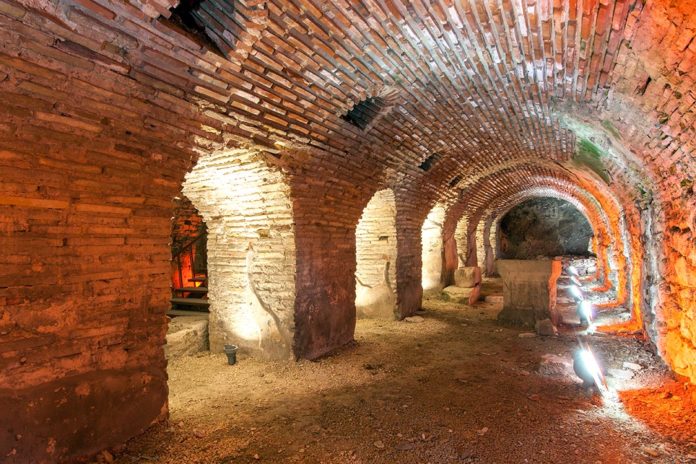Where the Past Still Steams
In the heart of Varna’s old quarter, surrounded by narrow streets and the salty air of the Black Sea, lies a vast relic of another era: the Roman Baths of Odessos. Once the pride of a bustling provincial city, these towering walls and vaulted halls have witnessed nearly 1,800 years of history.
Built in the late 2nd century CE, during the reigns of Emperor Septimius Severus and his successors, the baths served as a centerpiece for public life in Odessos—the ancient name for Varna. Here, Roman citizens gathered not only to bathe but to socialize, conduct business, and enjoy the luxuries of urban civilization.
A Colossus Among Baths
The Odessos baths are among the largest in the Balkans, covering over 7,000 square meters. Their scale rivals some of the great thermae of Rome itself, reflecting the city’s prosperity as a vital Black Sea port.
Archaeologists have identified the classical bathhouse layout:
- Apodyterium (changing rooms)
- Frigidarium (cold pool)
- Tepidarium (warm room)
- Caldarium (hot baths)
- Palaestra (open courtyard for exercise)
Beneath the floors, a network of hypocaust heating systems once channeled hot air from furnaces to keep the rooms warm and the water steaming—a marvel of Roman engineering.
Odessos: A City at the Crossroads
Initially founded by Greek colonists from Miletus in the 6th century BCE, Odessos became part of the Roman Empire in the 1st century CE. By the time the baths were built, the city was thriving as a trade hub, connecting the Aegean, the Danube, and the Black Sea.
The baths symbolized not only wealth but Roman cultural influence—bringing Mediterranean leisure traditions to the empire’s northeastern frontier.
Decline and Rediscovery
The baths remained in use for less than two centuries. By the late 4th century CE, amid economic decline and shifting political power, the complex was abandoned. Over time, its stones were quarried for other buildings, and the site lay buried beneath layers of medieval and modern Varna.
Excavations began in the 20th century, revealing massive walls up to 22 meters high in places, along with fragments of marble decoration, terracotta pipes, and stone columns. Today, the site is an archaeological reserve, open to visitors who can wander through its echoing vaults and imagine the hum of ancient life.
Visiting the Roman Baths Today
Location: Varna’s historic center, a short walk from the Cathedral of the Assumption
Best Time: Late afternoon in summer, when the warm light highlights the brickwork
Tickets: Available at the entrance; guided tours recommended for history lovers
Photo Tip: Capture the play of light through the arches, especially where the walls rise dramatically against the sky
Why It’s Worth Your Time
The Roman Baths of Odessos aren’t just ruins—they’re a tangible link between Varna’s Greek origins, its Roman grandeur, and its modern role as Bulgaria’s maritime capital. Standing among the arches, you can almost hear the splashing of water, the murmur of conversation, and the hiss of steam from the furnaces.
For lovers of history, architecture, or simply the romance of ancient places, this is one of the Black Sea’s most unforgettable stops.



